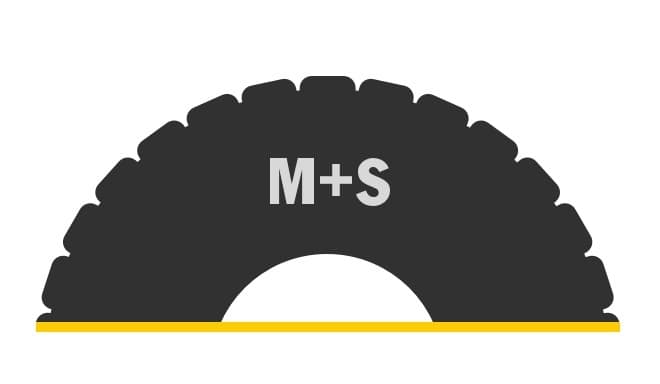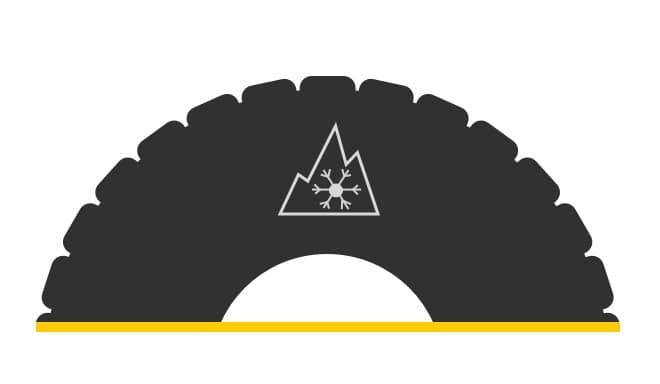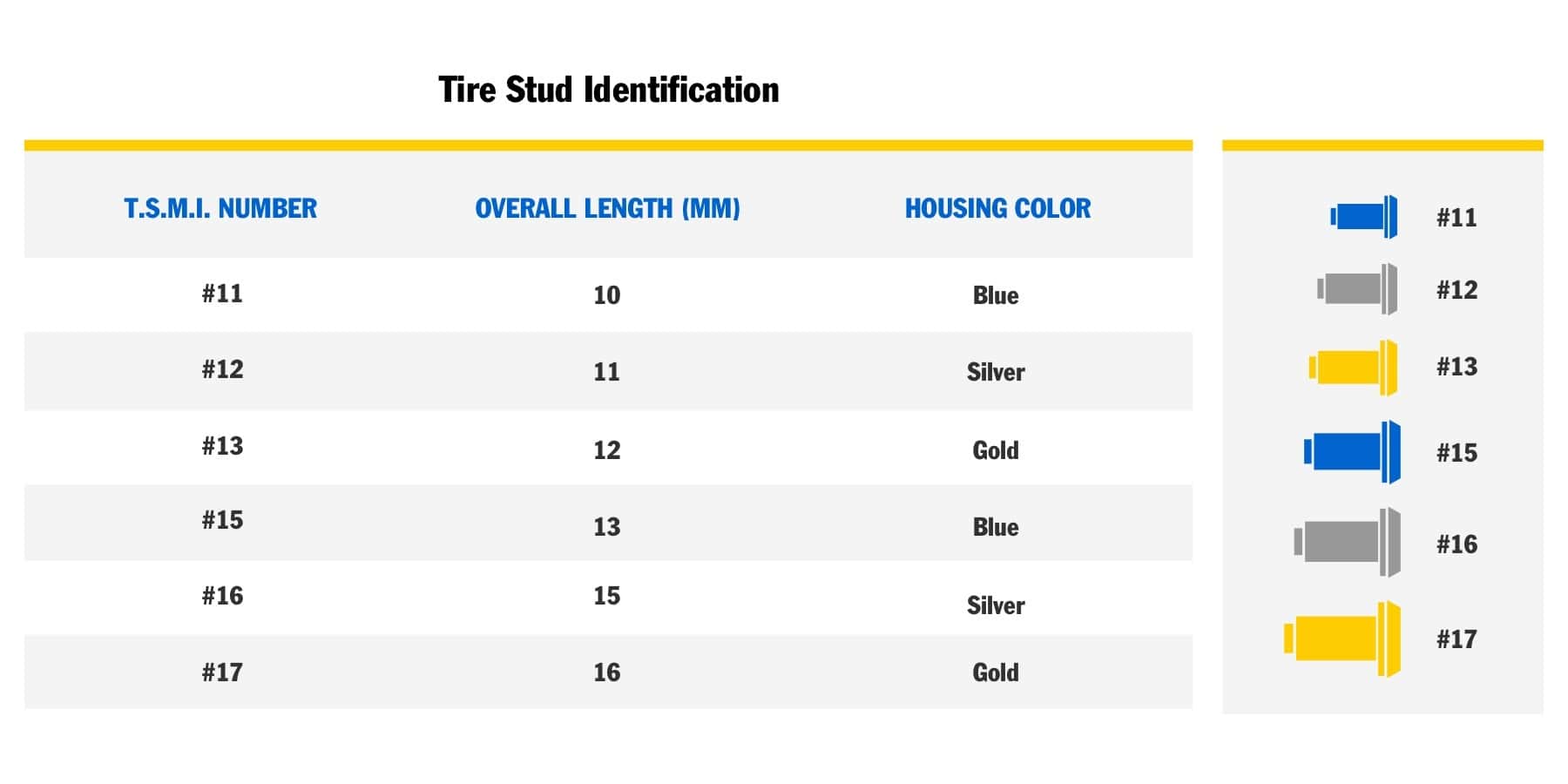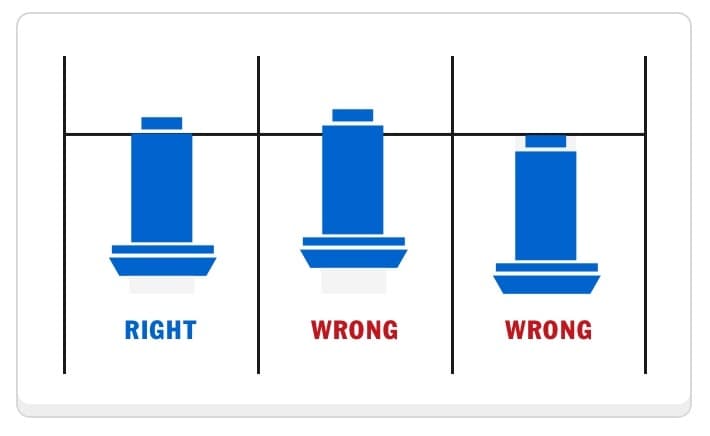Studded Snow Tires — 2023 Buyer’s Guide
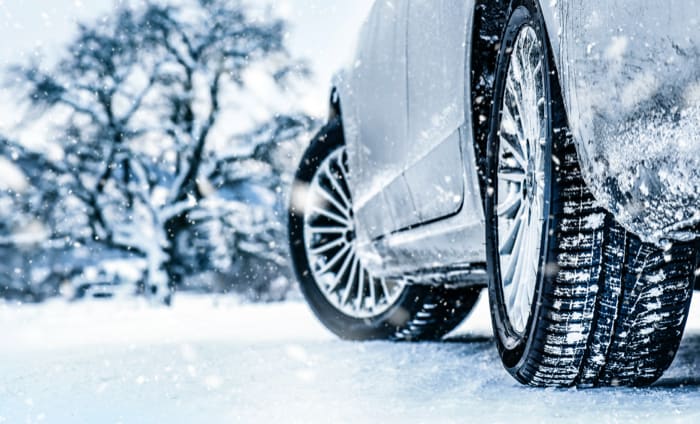
As winter approaches, it’s important to be sure that you have the appropriate tires to handle the worst weather conditions. While we believe that every commuter in New England should have a good set of winter tires, you should also consider if you need a set of studded snow tires.
A type of winter tire, studded snow tires are designed to provide you with maximum traction on packed snow and icy roads. However, studded tires aren’t right for every condition, and some states restrict their use to certain times of year.
This guide will help you determine if investing in a set of studded snow tires is the right move for you. Let’s dive in.
Winter Tires vs. Studded Snow Tires
What Are Winter Tire Studs?
How Are Tire Studs Installed?
Best Time to Install Studded Tires
Studded Tire Laws by State
How to Select Studded Winter Tires
Studded vs. Non-Studded vs. Studdable Tires
FAQs
Winter Tires vs. Studded Snow Tires
The terms “winter tires” and “snow tires” are interchangeable. Winter tires are distinct from all season tires by the industry-standard symbols on the tire sidewall: The M+S (mud and snow) symbol and the three-peak mountain snowflake (3PMSF) which indicates that the tire meets the industry’s snow-traction-performance requirements on medium-packed snow.
You can also recognize winter tires by their open tread pattern that helps dispel snow, slush, and ice. They are manufactured with special rubber components that keep the tire flexible in cold weather, which provides maximum traction and stopping ability. This flexibility helps the tire maintain more contact with the road, greatly improving your control in cold weather conditions.
However, winter tires still have their limits. Non-studded winter tires are unable to dig into ice or packed snow like studded winter tires can, making them less effective on icy and unplowed roads.
Studded winter tires, also called studded snow tires, contain actual studs built into the tread of the tires. Often made of metal, these studs are small rivets that act similarly to cleats on a shoe, allowing the tire to dig into snow or chip into ice.
There are also studdable winter tires, which are winter tires that have molded holds where studs could be screwed into. These tires will operate as a regular winter tire on their own, but can be converted into studded winter tires by adding the appropriate tire studs.
What Are Winter Tire Studs?
Modern studded tires were first widely used in 1950s Scandinavia as small, nail-like inserts to increase the traction of winter tires on icy roads. Studded tires first took hold in the U.S. in the 1960s and enjoyed growing popularity through the 1970s. By the 1990s, new technical improvements enhanced their performance, while state governments started to pass restrictions on their use to limit excessive pavement wear.
Tire studs consist of two primary parts:
- The cylindrical metal jacket (or body) is the outside part of the stud that is inserted and held in place within the tire tread rubber.
- The pin is the head of the stud and protrudes beyond the tire tread by about 1/32″ and is the part that contacts the pavement surface.
While the pins are usually made of tungsten carbide, tire studs can also be made from rubber or hard plastic.
Winter tire studs are manufactured in different lengths to match different hole depths within different makes of tires. You can identify different stud sizes by their Tire Stud Manufacture Index (T.S.M.I.) number, the stud’s overall length in millimeters (mm), and their housing color.
Studded winter tires will have anywhere from 80 to 100 studs per tire, each inserted into molded holes within the tire’s tread. A specialized stud gun spreads the rubber and inserts the stud so that the pin is the only element that protrudes from the tire surface.
|
A correctly inserted stud. The tread rubber compresses around the stud’s flat head to hold the stud in place while the pin protrudes past the tire surface. |
An improperly inserted or oversized stud. Part of the stud’s body protrudes from the tire. This can cause additional friction and wear on the molded hole, enlarging it and eventually ejecting the stud. |
An improperly inserted or undersized stud. The pin is flush with or beneath the tire’s surface, causing no road impact and making the stud ineffective, until there is wear on the tire. |
Only studdable winter tires that have been engineered with preset locations (holes) can have studs installed. Do not attempt to insert studs into regular winter or snow tires, as this will damage the tire and compromise its performance and safety. Studdable winter tires are sold without studs, which must be acquired and installed separately.
How Are Tire Studs Installed?
While you can install studs into a studdable tire with the right equipment, professional installation is recommended. Required stud size will vary depending on the tire, with the appropriate stud size listed on the tire sidewall. Tire studs are individually installed into each moldable hole with a stud gun. Stud installation, depending on the type of tire, can take up to one hour.
Most shops and professionals will only stud new tires, as used tires may have a pebble or other piece of debris within a moldable hole, creating a leak or flat upon insertion of a stud. For this reason, most shops may not remove tire studs. Once a studdable tire is studded, it will remain a studded tire and should be changed over to all-season or all-weather tires during their seasonal changeover.
Businesses will also typically not pre-stud tires because many can be sold unstudded. If you want to have your tires studded, communicate with your local tire shop about studding and consider putting a deposit down to save time.
Sometimes studs can come loose, but that shouldn’t affect the integrity of the tire provided the studs are properly replaced.
When’s the Best Time to Install Studded Tires?
Just like winter tires, it is recommended that studded and studdable tires be installed when the average temperature is below 40 degrees. Be aware that studded tires have additional seasonal restrictions depending on the states you live in. This is for a few reasons:
- Studs actually decrease traction potential on dry and wet roads. This is because the studs can interrupt the contact between the tire tread compound and the road surface, which can have a negative effect on stopping distances.
- For a similar reason, the traction advantages of studs in snowy, slushy, or mixed conditions are minimal. You’ll experience better performance with a traditional snow or winter tire.
- Studded tires may be good for ice traction, but they aren’t good for the roads. When roads aren’t covered with snow or ice, the tire studs will noisily chip into the pavement. This not only produces additional noise, it increases the wear on road surfaces.
Studded Tire Laws by State
Because studded tires cause more wear on roads, their consistent use can cost taxpayers millions of dollars in road maintenance and repair. Additionally, studded tires can cut ruts in the road that will fill with water, creating hazards such as pooling water, excessive tire spray, hydroplaning, and other vehicle control issues during wet weather.
As such, each state has different restrictions on the use of studded tires, with permitted use set by the state legislatures. Here are the studded tire laws for the four New England states that VIP Tires & Services operates in:
| Permitted | Restricted | |
| Maine | October 2nd to April 30th | May 1st to October 1st |
| Massachusetts | November 1st to April 30th | May 1st to October 31st |
| New Hampshire | Year Round | N/A |
| Vermont | Year Round | N/A |
Search your own state’s DOT page for further details on studded tire restrictions. For an overview of every state’s laws on studded tires, see the graph at the U.S. Tire Manufacturers Association.
How to Select Studded Winter Tires: Key Considerations
Should you invest in studded snow tires? That depends on a number of different factors. Ask yourself the following questions to see if studded tires are a good choice for you:
Location
- How often are roads you use the most covered in ice?
- How often are your roads covered in wet or hard-packed snow?
- Is your commute on mostly straight, main roads or on the highway?
- Do you have to deal with icy hills or sharp curves?
If your daily commute in the winter requires you to travel on icy or unplowed back roads, then studded tires start to make sense. If you’re mostly traveling on main roads or the highway, you may be better served with a set of regular snow tires.
Legality
- Are you in a state that allows studded tires?
- Does your state have a restriction on when you can use studded tires?
There are some states, such as Wisconsin, Minnesota, and North Carolina, that do not allow studded tires at any time of year. If you regularly travel to those states during the fall or winter, it may be worthwhile to purchase regular snow tires. If you’re a resident of a state without restrictions, such as New Hampshire or Vermont, then a set of studded tires can make sense, especially if you live in a remote area.
Commute
- How often are you driving in icy conditions?
- Do you need to travel on icy or unplowed roads?
- Are you driving long distances?
- Do you often drive before roads are paved?
Consider your regular commute in the winter. Are you able to stay home during heavy snowstorms or icy weather conditions or are you regularly out on the roads before most of the plowing is done? If you’re regularly driving in the worst conditions, then studded tires can be the safest and most sensible option.
Price
- Are studded winter tires an affordable choice for your needs?
A good set of winter tires will cost around the same as a similar quality set of all-season tires, so the exact price will depend on the brand and make of tire. Due to the extra materials, you can expect to pay more for a set of studded tires. Studdable tires will cost about the same as non-studded winter tires, but of course you’ll need to pay extra for studs and to have them installed.
Studded vs. Non-Studded vs. Studdable Tires: Which Is Right For You?
| Non-Studded | Studdable | Studded | |
| How to identify | Blocky tread with fine slits that grip snow & push away slush | Similar pattern to winter tires with molded holes for studs | Similar pattern to winter tires w/ 60–120 small metal studs |
| Ideal conditions to drive in | Muddy, wet, mixed and light snow conditions | Muddy, wet, mixed and light snow conditions w/out studs | Packed snow and icy conditions |
| Advantages | Great for wintry conditions, won’t damage roads or produce loud noise | Same advantages as non-studded, but can have studs added to handle icy conditions | Best option for driving on packed snow and icy conditions |
| Disadvantages | Limited to no traction on ice or hard-packed snow | Limited to no traction on ice or hard-packed snow w/out studs | Lower performance in non-icy conditions, can damage road surfaces |
| Recommended tire options |
|
|
|
“Also, seriously consider snow tires. These will give your car extra grip on snow and ice covered roads … Studless snow tires are quieter than studded and are effective in getting around on snow covered roads. Studded snow tires provide better grip on ice, but make sure you pay attention to wear and tear. Worn studs can poke through and ruin your tire (and your day).”
— VIP Master Tech Michael Corella (Source)
Studded Tires FAQs
What are studded tires?
Studded tires contain actual rivets or “studs” built into the tread of the tires. Often made of metal, these studs dig into ice and hard-packed snow to provide extra traction.
Do I need studded tires?
If you find yourself driving in icy conditions often during the winter months, either because of your location or other requirements of your commute, then you may want to invest in a set of studded winter tires.
What are the benefits of using studded tires?
Aside from using chains, studded winter tires provide the best possible traction in the worst snow and ice conditions. They provide greater control and more stopping power compared to regular winter or snow tires.
What are the drawbacks of studded tires?
Studded tires actually suffer in performance in conditions that aren’t ice or hard-packed snow, as they provide less surface contact with the road. Studded tires will also increase the wear on road surfaces, and so some states restrict when they can be used.
How long do studded tires last?
Like other tires, the life expectancy of a studded tire will depend on its usage. As long as they are used correctly — such as being used only on ice and packed snow-covered road surfaces — you can expect around 5 to 6 seasons of use.
Can tire studs be removed?
If the tires are relatively new, with significant remaining tread depth (more than 7/32”), it’s possible that it’s worthwhile to remove the studs. For older tires with less tread depth, it’s usually not worth the effort. Note that not all tire or service shops will offer a de-studding service.
Find The Best Studded Snow Tires With VIP Auto
The service experts at VIP Tires & Service recommend that you should only install and use studs if you feel there’s a distinct performance and traction advantage in doing so. If you want to discuss your options for winter, studdable, and studded tires, contact one of our Certified Automotive Professionals at any time.
Visit us at one of over 65 locations throughout the Northeast. Walk-ins Welcome!
Schedule Service Get a Free Quote